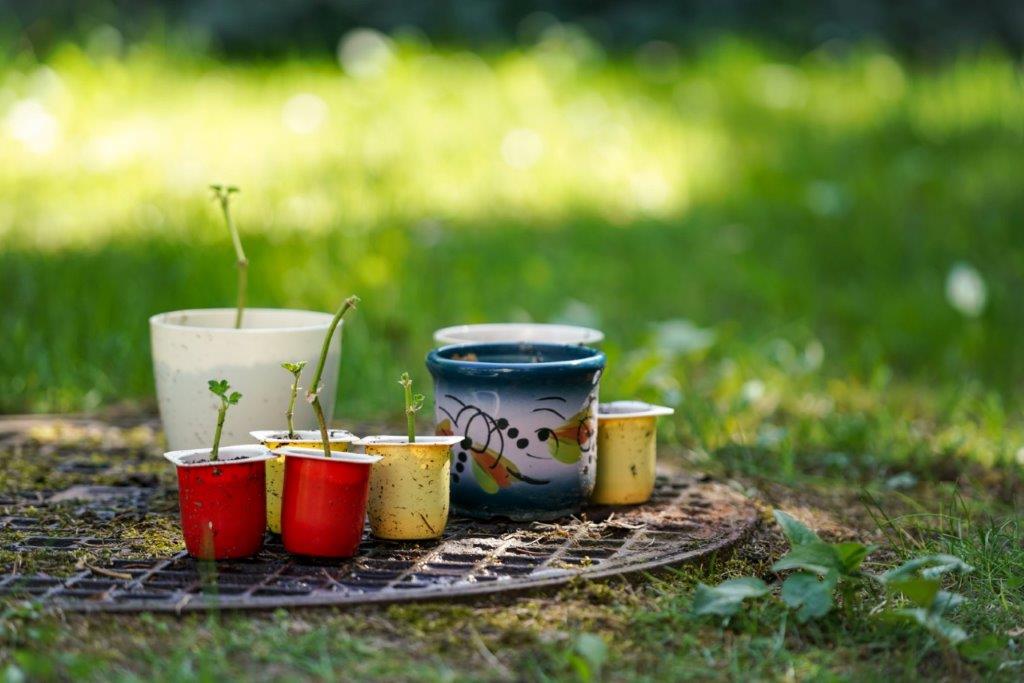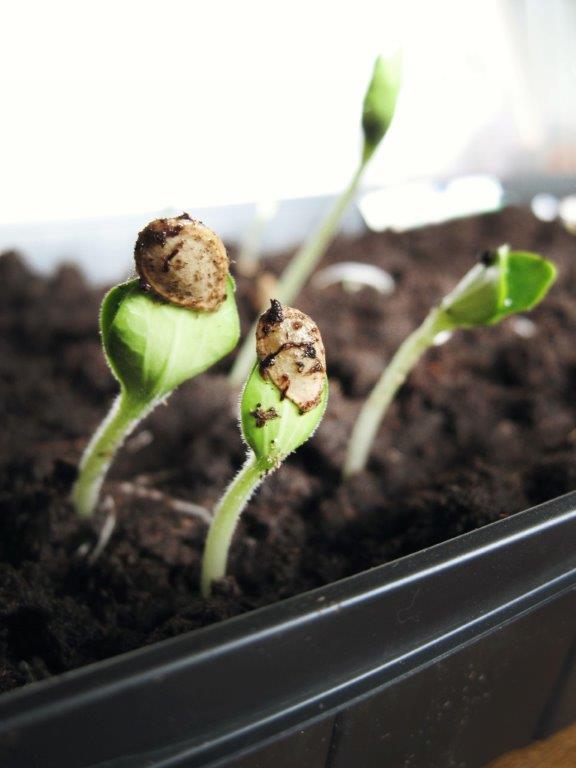The Covid-19 coronavirus and its subsequent isolation regulations have meant that the things we usually take for granted, such as an evening meal at our favourite restaurant, walking the dog, or visits to the game reserve, have become somewhat limited. Being housebound for so long has definite drawbacks, the least of which is cabin fever.
 Since staying home is best, at least for the near future, we need a bit of greenery in our lives. And fresh air. This makes now the perfect time to start a little veggie or herb garden of your own. It will get you out into the sunshine and give you something rewarding to do – especially if you get the kids involved, and even more so if you combine this undertaking with a little crafty upcycling.
Since staying home is best, at least for the near future, we need a bit of greenery in our lives. And fresh air. This makes now the perfect time to start a little veggie or herb garden of your own. It will get you out into the sunshine and give you something rewarding to do – especially if you get the kids involved, and even more so if you combine this undertaking with a little crafty upcycling.
We all have bits and bobs lying around the house, things we don’t use, things we would normally throw away. This includes old teacups, jugs, jars and bottles. Instead of filling up the landfills, we can all do our bit to turn these articles into seed starters. They can all serve another purpose, and that is to help you start an epic little herb or vegetable garden, or if you prefer, a flower garden.
Starting off with your own seedlings gives you a head start and can save you quite a bit of cash. Not to mention the warm, fuzzy feeling you get when you see that first tiny bud appear from the soil, from a small seed you planted yourself. And we promise, there is nothing quite like the feeling of pinching a few fresh basil leaves from your own home-grown plants and scattering them over pasta.
April to June is the ideal time to start planting perennials like lettuce, thyme, lavender, baby spinach, pak choi and rosemary. Firstly, pests are less of a problem and secondly the cooler temperatures mean you don’t have to water as much. With our balmy Lowveld climate frost won’t be a problem either. Make sure you use fertile, well-drained soil, and be sure not to overwater. Your herb/veggie/flower patch can be as big or small as you like. For the upcycling purpose you can use a windowsill or an old, repurposed bookshelf.
And don’t forget the importance of companion planting. Some matches really were made in heaven, like marigolds and cucumbers, and lettuce and aubergines. Plant beetroot and carrots, beans and potatoes, or onion chives with dill. Companion plants do not steal nutrients, act as “nursemaids” and help to deter pests.
What to use
 1. Glass jars and bottles
1. Glass jars and bottles
Jam jars are so much fun and there are so many things you can do with them. The smaller ones are perfect for starting out with your seeds, and you can move them to bigger jars as they grow. You can either plant them in soil, or, if propagating, cut them off in the correct diagonal manner and place in water until roots start to grow, after which they can go into the ground or a bigger pot.
2. Plastic cooldrink bottles
Take an empty two-litre plastic bottle and cut the bottom off, about ¼ of the way up. Turn it upside down and make a small hole on either side of the cut edge. Thread a loop of string through the holes, and hang it from a bracket or wall hook. Fill with potting soil and plant the seeds in the top. To make a vertical garden, repeat the process, using three to four bottles and attach them to one other. This way you will create a sustainable hanging garden, and each bottle will feed the water through to the one underneath it.
3. Empty toilet rolls
Using empty toilet paper rolls is an excellent way of nurturing plants that don’t like their roots disturbed, such as peas and beans. You simply make four short cuts at the bottom, fold the pieces in, fill with soil and plant your seed. Then you place the whole thing into the ground or a pot. The paper will rot away, keeping the seedling safe and sound inside.
 4. Paper cups
4. Paper cups
These cups are made to withstand hot liquids so they are fairly robust and will keep your plants snug. Remember to poke a drainage hole at the base. If you have any coffee grounds left after your delicious brew, scatter them into some soil or over the garden. The nitrogen is an excellent promoter of healthy growth and strong stems.
5. Plastic cups
Plastic yogurt and juice containers work in much the same way as paper cups. Simply put a drainage hole or two at the bottom, add a few stones, fill with soil and plant your seeds. They can be placed into a wooden box and trained to hang over the side, or simply used as an intermediate option.
6. Tin cans
One of the prettiest sights in the Italian countryside is the geraniums, blooming on windowsills, front porches, balconies and verandas in all their glory. Often, they are planted in empty tomato tins, in all different sizes, sometimes with the label left on, declaring the tin a brightly coloured, cheerful holder for a pretty green and growing thing. Remember to rinse thoroughly, put stones in the bottom for drainage (or drill a few holes), then fill up with your soil and plant your seed. Tins are so versatile – you can paint them or wrap a rustic twine around the neck or body of the can.
 7. Veggie and mushroom punnets
7. Veggie and mushroom punnets
Don’t discard the plastic punnets your mushrooms, strawberries, grapes and so on, come in! They are perfect to use as seed trays. Some of them have lids which you can use to make a little mini-greenhouse, especially if you want to baby something along.
8. Pallets
Convert those old pallets into an upcycled outdoor plant holder. You can really go to town with these – you can put wheels on and make it mobile; put it up on the wall for creepers and hanging plants, or to shelter it from weather and sunlight; or use it as a window box, painted and/or mosaicked, or simply left plain for a rustic look. All you need are a few basic DIY skills and you have the perfect place for leafy herbs, salad items (think lettuce) or any other shallow rooted crops.
9. Brown paper bags
Kraft or brown paper breaks down over time, acting in the same way as toilet rolls. This makes them ideal holders for plants you grow from seed and want to transplant into a bigger pot. They can also be packed together in an old tomato box.
 10. Egg cartons and shells
10. Egg cartons and shells
Just like empty toilet rolls, egg cartons make excellent receptacles for little plants and seedlings. Each cup can be filled with soil, the seeds sown in and the cup torn off and deposited directly into the soil. They will eventually disappear as they break down into harmless nothingness. The eggshells themselves are biodegradable and the perfect size for seedlings. They are also good fertilisers for the soil and add calcium as they break down.


